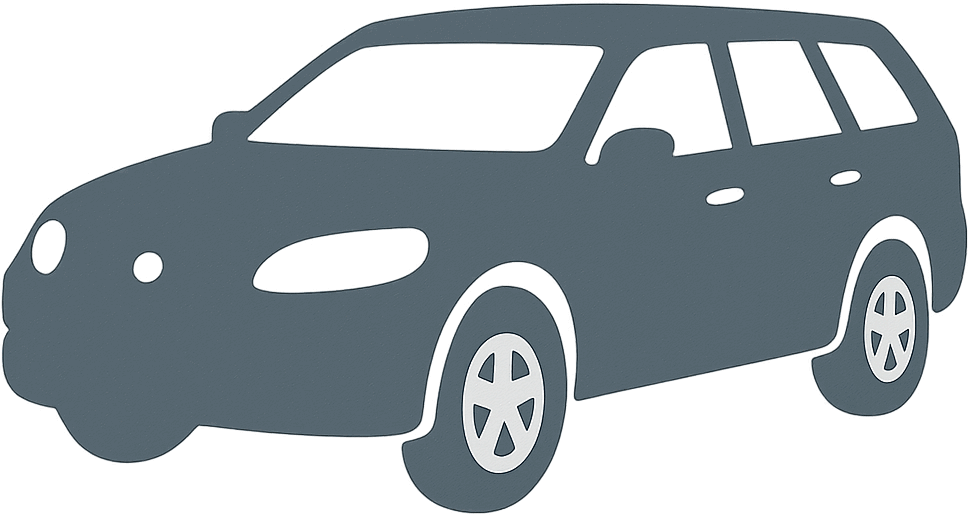 1950 DeSoto Custom Station Wagon (Second Series) Dimensions, Size & Specs
1950 DeSoto Custom Station Wagon (Second Series) Dimensions, Size & Specs
Measurements of the 1950 DeSoto Custom Station Wagon, engineered for optimal performance and comfort
| Dimensions | |
|---|---|
| Length: | 5464 mm215.1 in17.9 ft |
| Width: | 1862 mm73.3 in6.1 ft |
| Height: | 1687 mm66.4 in5.5 ft |
The 1950 DeSoto Custom Station Wagon (Second Series) represents an iconic classic American vehicle designed for families and utility with style. Produced solely in 1950, this station wagon boasts a substantial body size that reflects the era's preference for spacious, comfortable vehicles. Measuring 5464 mm (approximately 215.1 inches) in length, the wagon offers ample interior space for passengers and cargo. Its width spans 1862 mm (roughly 73.3 inches), providing a stable and roomy cabin. Standing tall at 1687 mm (about 66.4 inches), the height gives the vehicle a commanding presence on the road. As a second-series Custom model, this DeSoto station wagon embodies the robust design and craftsmanship typical of late 1940s and early 1950s American automobiles, featuring classic styling cues and a roomy layout ideal for family trips or transporting goods. Its dimensions place it firmly within the full-size car category of its time, with a length that far exceeds many contemporary sedans. The DeSoto Custom Station Wagon was not just a practical vehicle but also a symbol of post-war prosperity and mobility, blending utility with the distinctive DeSoto character. For enthusiasts and collectors, understanding its size and proportions is key to appreciating its role in automotive history and comparing it with other vintage station wagons.
Discover the standout features that make the 1950 DeSoto Custom Station Wagon a leader in its class
Have a question? Please check our knowledgebase first.
The 1950 DeSoto Custom Station Wagon (Second Series) measures 5464 mm (approximately 215.0 inches) in length, 1862 mm (about 73.3 inches) in width, and 1687 mm (roughly 66.4 inches) in height. These dimensions give the vehicle a substantial road presence typical of American station wagons of the era, aimed at providing spacious passenger and cargo accommodation. The relatively long length and width make it comfortable for family use and long trips, while the height allows for good headroom inside the cabin.
With a width of 1862 mm (73.3 inches), the 1950 DeSoto Custom Station Wagon is wider than many compact and midsize modern vehicles but comparable to contemporary full-size cars and SUVs. This width offers a roomy interior and contributes to road stability. However, it may pose challenges in tight urban parking spaces or narrow streets common today. Compared to modern cars which often have width ranging between 1,750 mm and 1,850 mm, the DeSoto fits within the upper range, so drivers should consider parking space availability when driving in dense city environments.
The vehicle stands at 1687 mm (about 66.4 inches) tall, which is fairly tall for a 1950 station wagon. The greater height enhances interior headroom and makes loading and unloading cargo easier, especially with the station wagon body style that emphasizes practicality. From a handling perspective, the higher center of gravity might lead to more body roll compared to lower sedans, but the design trade-off favors passenger comfort and cargo capacity consistent with family or utility use.
Most standard residential garages have a door clearance height between 2,130 and 2,440 mm (84 to 96 inches) and a width of around 2,400 mm (94.5 inches). Given the DeSoto's height of 1687 mm (66.4 inches) and width of 1862 mm (73.3 inches), the vehicle easily fits within the vertical and horizontal clearance of a typical single-car garage. However, owners should consider additional space for opening doors and ease of maneuvering. The length of 5464 mm (215.0 inches) may require a longer garage or careful parking, but overall, the station wagon can be accommodated in most average home garages.
The 1950 DeSoto Custom Station Wagon measures 5464 mm (215.0 inches) in length, which is consistent with or slightly longer than some predecessor models from the late 1940s DeSoto lineup. While specific predecessor station wagon lengths can vary, the second series Custom model generally increased in length to provide more passenger and cargo space, responding to market demand for larger family vehicles. This increase in length contributed to improved interior volume but also required more room for parking and maneuvering.
When compared to similar 1950s American station wagons like the Chevrolet Styleline or Ford Custom, the DeSoto Custom Station Wagon’s length of 5464 mm (215.0 in), width of 1862 mm (73.3 in), and height of 1687 mm (66.4 in) place it in the larger full-size category. Many comparable wagons were slightly shorter or narrower, reflecting DeSoto’s market positioning toward roomy, upscale vehicles. This size advantage translated into a more spacious cabin and greater cargo capacity, making the DeSoto attractive for families seeking comfort and utility in one vehicle.
The 1950 DeSoto Custom Station Wagon (Second Series) brought design updates typical of the post-war automotive boom, including a more streamlined body with smoother curves and a more prominent front grille. The styling aimed to modernize DeSoto's image and improve aerodynamics slightly. Inside, the interior was more spacious and comfortable, with better upholstery and trim options reflecting the evolving tastes of consumers. These changes, combined with practical wagon features, helped the model appeal to families and professionals alike.
While the exact weight of the 1950 DeSoto Custom Station Wagon isn't specified here, vehicles of this size and era typically weighed between 1,800 to 2,100 kilograms (3,968 to 4,630 pounds). The substantial weight, due to sturdy steel construction and spacious design, impacted fuel efficiency by necessitating more engine power to maintain performance. Fuel economy was generally modest, as was common with large American station wagons of the early 1950s. The weight contributed positively to ride comfort and stability but was a trade-off for higher fuel consumption.
The 1950 DeSoto Custom Station Wagon is designed primarily as a family vehicle, offering seating for six to eight passengers depending on configuration, which includes front bench seats and rear bench or folding seats to maximize space. The station wagon body style allows for versatile cargo capacity, with rear seats that can be folded down to increase storage volume considerably. This made it ideal for large families and those needing to transport bulky items, combining passenger comfort with practical utility.
The interior width closely corresponds to the exterior width of 1862 mm (73.3 inches), which allows generous shoulder room for passengers, especially on the bench seats typical for this era. This width ensures that three passengers can be comfortably seated in both the front and rear rows, enhancing comfort on longer drives. The station wagon’s spacious interior was designed to accommodate families and groups comfortably, which was a selling point for buyers seeking roominess in a practical vehicle.
Discover similar sized cars.

| Production: | 1949 |
|---|---|
| Model Year: | 1949 |
| Length: | 5464 mm215.1 in |
| Width: | 1862 mm73.3 in |
| Height: | 1687 mm66.4 in |
